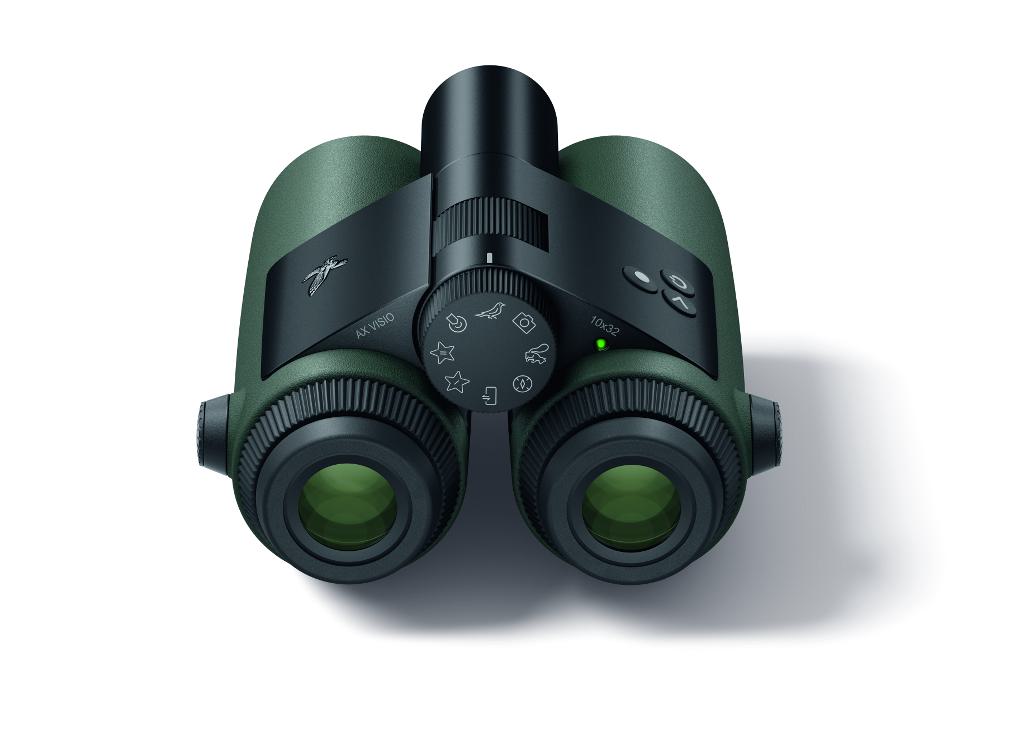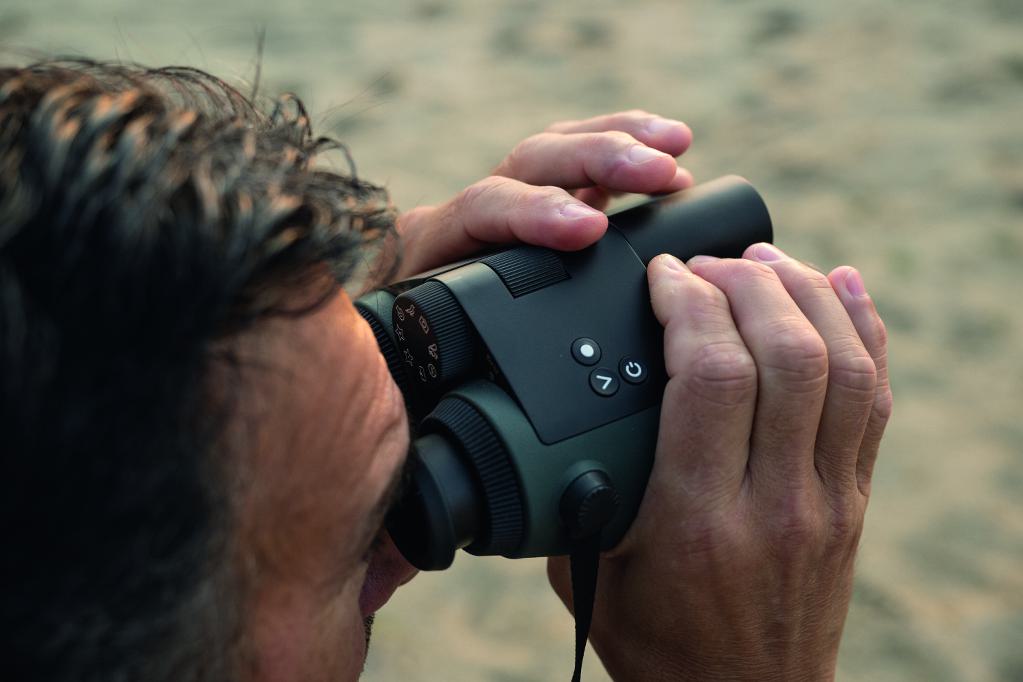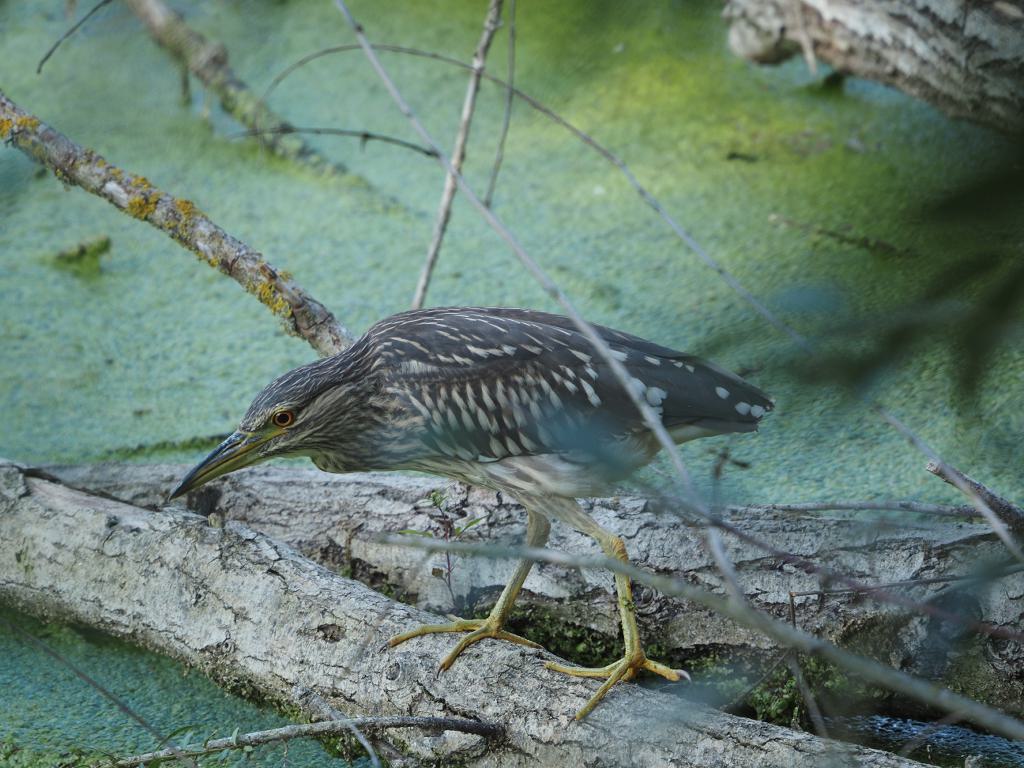
This is not a premature April Fool’s joke, even if it reads like one. Swarowski has brought a pair of binoculars onto the market that has a bird detection function. Not as we know it from cameras – it puts a frame around the bird and focuses on it.
Nope – the binoculars tell me the name of the bird. It also recognises “other animal species” = mammals. It has an “identification function” at the touch of a button.
AI-supported binoculars with “digital intelligence”.
Available in any colour, as long as it’s green.
Costs 4600 euros. And can also take photos. The 3000mAh battery costs 63 euros. A charging cradle is included, but not a mains adapter. (OMDS is therefore in good company).
And yes, of course the binoculars have autofocus. At the touch of a button. And if you identify a bird, a photo is always taken immediately.
If you don’t want to identify birds, but mammals, simply set the selection dial to the squirrel and …. Same procedure: Hold the binoculars at the target, press the shutter release, AF, the binoculars indicate whether the identification has already been successful and then take a photo.
And of course you can also take photos or videos just like that.

And one more thing: if you’re travelling as a couple, you know what it’s like – “look, a marmot” “Wooo?” “Na daaaaa!” “I can’t see anything!”. With the AX-Visio, you aim at the marmot, press the button, then hand the binoculars to the person next to you and lo and behold – the binoculars show where the person has to swivel to see the marmot.
The item is 154mm long, 137mm wide and weighs 1090 grams without the battery. The sensor has 13MP and the binoculars can film in FHD. WiFi and Bluetooth are of course on board, and there is also an app for this. And the binoculars have 28GB of memory. You should just shovel them onto your smartphone every now and then.
So? Where is Sony? Where is Canon? Why is it still not possible to enter “Today I only want to take pictures of young night herons” on the 6000 euro models and the camera won’t focus on anything else? Incidentally, the AX-Visio can display the animal names in two languages simultaneously if required.

About a year ago, we talked about it in a FolyFos that such a “forwarding function” was under development and that they were considering synchronising it with a camera so that one person with binoculars could find the creature and the other with the camera would know where to pan to. We thought that was pretty crazy at the time. And unfortunately it can be used for military purposes.
Swarowski makes rifle scopes.
Oh yes: of course it doesn’t work. The cattle detection thing. Mrs Bechtold agrees with me: as long as AI fails at things I know about, how am I supposed to know what the results are worth if I have no idea about the matter?
Wahrscheinlich funktioniert das Teil bei der Erkennung militärischer Fahrzeugtypen recht zuverlässig. Die Weiterentwicklung für die zivile Nutzung hinkt wohl noch etwas hinterher. Das wird aber noch kommen, um das Teil durch Massenfertigung auch für kleinere Militärhaushalte bezahlbar zu machen. 😉
Wir hatten das Teil zum testen. Die Trefferquote der Tiererkennung war erschreckend gering, überwiegend wurden die Vögel falsch bezeichnet. Meines Erachtens ist das eine Beta-Version, wenn überhaupt …
Da bin ich aber froh, bei mir war es genau so. Die KI eine Katastrophe. Die Qualität der Bilder (nur JPEG) mies.
Also ich bleibe dann bei meiner bisherigen Methode: mit der Olympus fotografieren, das Bild ans Smartphone senden und mit Google Lens auswerten. Dauert zwar länger, aber ich kriege ja Bilder zum Vergleichen angezeigt und kann das Ergebnis überprüfen.
So ganz neu ist das jetzt nicht. Swarovski dG 8×25 (gibt es seid Frühjahr 2020) konnte auch schon die Vogelerkennung. Auch 13MP. Damals noch mit App, die nicht von Swarovski ist. Die App heißt jetzt Merlin Bird ID. Diese App funktioniert erstaunlich gut für Vogelidentifizierung. Kann auch noch mehr als von Fotos bestimmen. Vogelgezwitschern oder per Multiple-Choice-Auswahlmenü geht auch. Gerade die Audiooption per Vogelgezwitscher nutze ich gerne.
Die App ist ne Entwicklung von der Cornell und Caltech Unis und TU Chemnitz hat auch irgendwie mal mitgewirkt.
Lohnt sich auszuprobieren. Allerdings muss man vorher die Datenbank für die entsprechende Region(en) runterladen. Sonst steht man ohne Funktion dar wenn gerade mal kein Mobilfunkempfang ist.
Keine Ahnung ob man mit dem neuen Fernglas nun auch noch die App braucht.
Was die optische Leistung von Swarovski Ferngläsern und Teleskopen angeht. Die Dinger sind hervorragend. Meiner Meinung besser als Zeiss und Leica. Das ist aber subjektiv und ich war erstaunt, das Ferngläser doch auch individuell anders als besser oder schlechter empfunden werden. Muss man also ausprobieren. Glücklicherweise gibt es da noch echte Geschäfte mit fachkundiger Beratung (meist Jagdbedarf).
Nachtrag… Der Aufpreis gegenüber einem NL Pure 10×32 (2820EUR), welches eine deutlich bessere Optik bietet und die hälfte wiegt lohnt sich wahrscheinlich nicht.
Sarkasmus=an;
Wer mit Familie im neuen 4×4 SUV und der gerade frisch gekauften Outdoorausrüstung für den subtropischen Regenwald in den (Schwarz-, Bayerischen, was weiß ich) Wald prescht, der kann sich so ein vollautomatisches Ding wahrscheinlich auch noch leisten und damit angeben bis der Akku leer ist.
Sarkasmus=aus;
Ich hab auf dem Smartphone ne App, die zeichnet Vogelgezwitscher auf und sagt mir dann, welcher Vogel das war. Für mich erleichtert das den Einstieg in die Bestimmung der Arten ungemein. Das ist doch hier ganz ähnlich und Swarovski geht mit dem AX-Visio einen Schritt in die richtige Richtung. Das Produkt ist noch nicht gleich perfekt? Tja … Luft nach oben wird es immer geben. Aber die Richtung stimmt aus meiner Sicht.
Viele Grüße,
Daniel
Wie bei den Montagsmalern: Hund, Katze, Maus …. 😉
Aber ehrlich, so eine Masse Holz muss man dafür blechen, und dann ist da kein Stabi drin? Das wäre wesentlich sinnvoller, und würde vielleicht der KI helfen, das Tierchen besser zu erkennen.
Stabi im Fernglas ist tatsächlich ein wesentlicher Sprung nach vorne. Solche Features sind zwar deutlich schwerer, erlauben aber ein entspanntes Sehen auch über 10x Vergrößerung hinaus. Ohne Firmennennung haben hier die großen Fotohersteller einen Vorsprung aufgrund ihrer technischen Kompetenz; ich war verblüfft, als ich das erste Mal durch ein solches Glas geblickt habe.
Allerdings erspart das niemand den beschwerlichen Weg über die klassische detektive Ornithologie; nichts ist spannender (wenn man ein bißchen aus dieser Ecke kommt), als sich über ein unklar bestimmtes Vögelchen zu unterhalten ( vielleicht sogar mit diesbezüglicher britischer Kauzigkeit) und das geht halt bis jetzt nur über analoge oder digitale Kataloge.
Natürlich ist über KI in Zukunft vieles möglich, aber um z.B. juvenile Möwen sicher nach Art zu distinguieren, fließt noch einiges Wasser in die Ozeane dieser Welt.
P.S.: Wer den jungen Nachtreiher als solchen identifiziert hat, war kein Studiofotograf; oder sollte ich mal wieder täuschen?
Genau!
Mein ideales Fernglas hat eine gute Optik, einen Stabi (beides schon heute – mit Namensnennung – von Canon), und dann möchte ich auch noch einen Autofocus wie bei meiner E-M1, und warum nicht auch noch eine automatische Dioptrien-Korrektur, getrennt für beide Augen?
Zum KI-Gedöns sage ich nur: Spielt mal schön weiter…